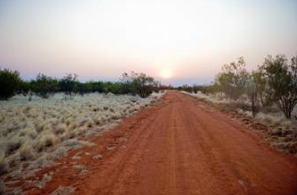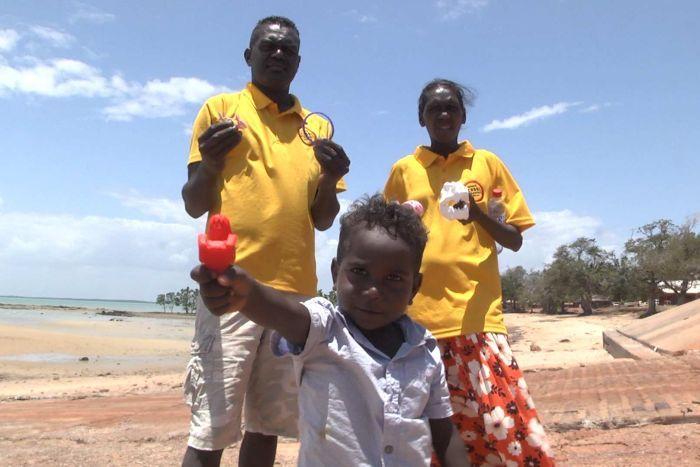3D Printing Training Among Mandatory Australian Government Courses, Some More Helpful Than Others, for Indigenous Job Seekers
 One way to utilize 3D printing in terms of sustainability is by bringing the technology to a classroom setting. Unemployed people who receive welfare in remote parts of Australia, whose government initiative to offer broadband Internet to the entire country could help bring 3D printing to the outlying parts of the country, are required to take part in 25 hours of tasks and training per week as part of the government’s Department of Human Services Community Development Program (CDP). The program’s goal is to “assist job seekers living in remote parts of Australia help their community and gain skills while looking for local work.”
One way to utilize 3D printing in terms of sustainability is by bringing the technology to a classroom setting. Unemployed people who receive welfare in remote parts of Australia, whose government initiative to offer broadband Internet to the entire country could help bring 3D printing to the outlying parts of the country, are required to take part in 25 hours of tasks and training per week as part of the government’s Department of Human Services Community Development Program (CDP). The program’s goal is to “assist job seekers living in remote parts of Australia help their community and gain skills while looking for local work.”
The program, which supports around 37,000 Australians, more than 80% of whom are Aboriginal and Torres Strait Islander people, was created in 2015 to replace the Remote Jobs and Community Program, and is an important part of the Australian government’s agenda to increase employment while halting the cycle of welfare dependency in remote parts of the country. Participants get personalized assistance from their providers to help build their skills, participate in the community, and get a job. They are able to go through formal training, gain qualifications or skills like literacy and driver’s training, and get up to six months of work experience in a real work environment.
As you may have guessed by now, one of the training classes offered through the CDP has to do with 3D printing. In the “Plastic Fantastic” 3D printing training, an initiative led by the Arnhem Land Progress Association (ALPA), participants have the opportunity to create and 3D print several different fun and useful objects, like jewelry, glow-in-the-dark totem bike spoke clips, a mobile phone charger, and fabric stamps used to decorate clothes. Some of the 3D printed works could also be pretty handy in the wilderness, like a solar panel and a torch.However, not everything about the program is coming up roses. Last year, over 20,000 unemployed people were fined for not attending the classes. Not all of them are as valuable as the 3D printing class is, or a program that helps participants develop the leadership skills required to be a CDP supervisor. In fact, a couple of them seem downright condescending, like an activity that teaches women about personal grooming and hygiene so they can avoid spreading disease. Senator Rachel Siewert with the West Australian Greens Party, and a spokeswoman for Aboriginal issues, said the activities are not helping those who are looking for employment.
CDP participants, who are required to take part in the program if they live in a remote area, receive some sort of government allowance like a Newstart Allowance (for those seeking work), or have any mutual obligation requirements, tend to work up to three times longer than other unemployed people to receive benefits. According to ABC, about 90% of the people fined for breaching the program were Indigenous. Each day someone does not show up for the CDP activities, penalties are worth a tenth of a person’s fortnightly payment. An unemployed person receiving financial support through a Newstart Allowance, which is less than $290 a week, can receive penalties that range from $48 to $57, which is devastating to their financial well-being.“It’s making up activities for people. The feedback I’ve had is they feel that some of the activities are quite condescending and they’re really just making it appear as if people are actually doing something rather than genuinely getting people into employment and genuinely preparing people for employment,” said Senator Siewert.
Federal Indigenous Affairs Minister Nigel Scullion told ABC that the CDP was about providing purposeful activities for people, not about getting them into gainful employment.
“This is not about jobs, this is about purposeful activities that the community benefit from and the community choose. That’s what the basis of CDP is. We need positive activities so if a job does come up somewhere else or a job does come up there that we are in a space that we can move to that job,” said Senator Scullion.
I find this very interesting, since the website clearly says that the program is there to assist job seekers, stating, “CDP has two parts; helping people find work, and allowing them to contribute to their communities and gain skills while looking for work.” A spokesman for the Prime Minister’s department, which oversees Indigenous affairs, said that the activities were broad and designed by communities. So yes, there are beneficial community activities involved, but the program seems to be, first and foremost, a way to find assistance if you are unemployed. Many Indigenous people live hundreds of kilometers away from major centers, and don’t want to have to travel all that way for over 25 hours a week to learn how to properly bathe themselves. Being unemployed can feel pretty demoralizing. So perhaps, instead of fining these people, the government could try to find a way to help them, like organizing ride shares, or somehow getting a mobile 3D printing unit out to the remote areas. Discuss in the Australia CDP forum at 3DPB.com.
[Source: ABC]Subscribe to Our Email Newsletter
Stay up-to-date on all the latest news from the 3D printing industry and receive information and offers from third party vendors.
Print Services
Upload your 3D Models and get them printed quickly and efficiently.
You May Also Like
AMT Shakes Up 3D Printing Market with Affordable, High-Performance Post-Processing Consumables
Additive Manufacturing Technologies (AMT), a global leader in automated 3D printing post-processing, is launching a new line of consumables that promises to significantly reduce operational costs for additive manufacturing users....
The Bambu Lab 3D Printing Platform… or Trapdoor?
Bambu Lab began as a completely closed 3D printing system, where the printer, software, and materials all functioned well but were exclusively from the company itself. This approach mirrored Formlabs,...
2025 Renault 5 E-Tech Electric Is Latest Car with 3D Printed Accessories
Due to the required numbers, additive manufacturing (AM) has struggled to make significant inroads into vehicle interiors in meaningful numbers—at least as far as public knowledge is concerned. Typically an...
BMW Completes Project to Automate Plastic 3D Printing
After a three-year journey to efficiently scale polymer 3D printed part production, the POLYLINE project has concluded. This endeavor, headquartered at BMW’s Additive Manufacturing Campus, pooled the expertise of EOS,...

































